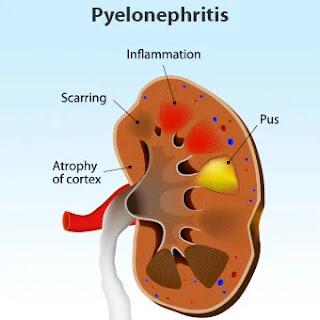Fat Embolism Syndrome- A complete Overview
Fat embolism syndrome is a part of intravascular fat that is passes through the blood vessel and causes a blockage of blood flow. The fat emboli occurs after fractures in the long bones of the lower body like femur, tibia and pelvis. As fat emboli is common and settles down on its own, it leads to a serious condition like Fat Embolism Syndrome (FES). This FES can cause inflammation, neurological changes and multi organ dysfunction.
Symptoms Of FES
The signs of FES are generally seen 12-72 hours after the trauma. Symptoms appear throughout the body which include-
- Rapid breathing
- Shortness of breath
- Mental confusion
- Lethargy
- Coma
- Pinpoint rash, found on the chest, head, neck area which occurs as a result of bleeding on the skin.
- Fever
- Anemia.
Causes Of FES
The idea of mechanical obstruction theory that leads to fat emboli and FSE is that when the large bones break down, fat from the bone marrow, made of fatty cells seeps down into the blood stream. This fat results in creating clots which obstructs the blood flow in the lungs. These emboli also produces widespread inflammation.
On the other hand, the small bones and large bones have more fat tissue which makes FES likely to occur. FES can also cause due to other bodily trauma which includes joint replacement surgery, liposuction. FES can surely occur when the soft tissue is damaged due to the burns.
Chemical theory is a also a cause where the body responds to the fat emboli by passing chemicals which leads to the formation of the fatty acids, glycerol and other substances which damage the cells and organs.
Certain risk factors that easily lead to FES are-
- being male
- being of the age 20-30 years
- have had a closed fracture
- have been through multiple fractures, in particular in the lower extremities and pelvis.
Diagnosis Of FES
There is no particular definite test that can diagnose FES. Even in the presence of fat emboli, the imaging tests can look normal. Thus doctors rely on physical examination, medical history to what is known as Gurd's criteria.
Gurd's criteria include-
- petechial rash
- respiratory distress
- mental concussion
- fat in the blood
- fever
- jaundice
- anemia
- fast heartbeat
- renal dysfunction.
Treatment of FES
In FES treatment the patient is usually sent to the hospital, to the intensive care unit. The oxygen levels are checked form time to time, and if there is the need then oxygen shall also be given. Some may even require mechanical ventilation. Intravenous fluids and drugs shall be required to increase the blood volume. In turn it helps in removing the free fatty acids from the body. The doctor shall prescribe steroids and the blood thinner drug herapin, however one cannot totally rely on them. These medicines can be ordered online from the best online medical app in India.
Outlook
Precautions shall be taken in order to avoid such major injuries. For this, removing slipping hazards from the house, making sure that the shoes are fitted in properly, to practice yoga balancing and improving the balanced diet. These can help in speedy recovery at the time of breaking of bone also.




Comments
Post a Comment